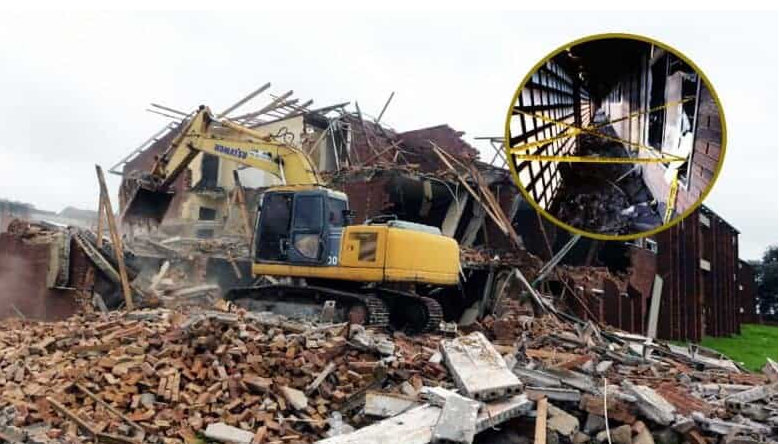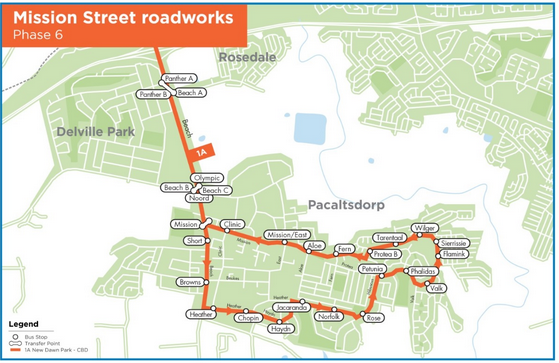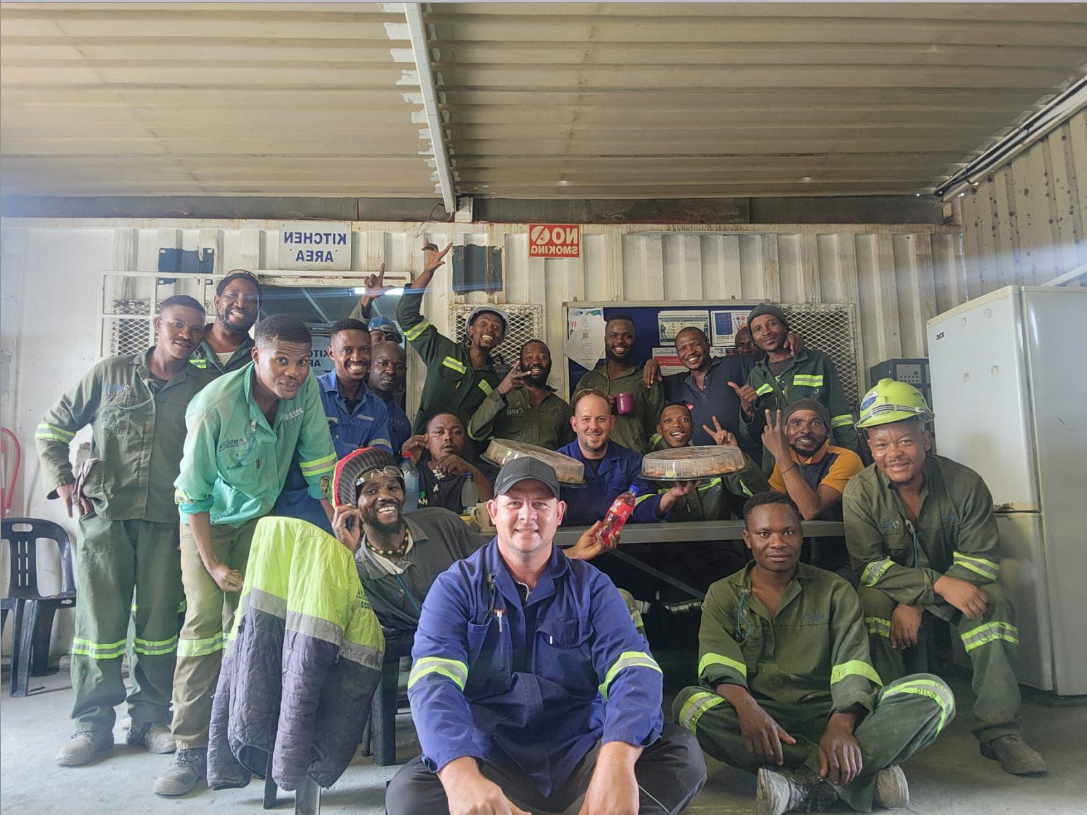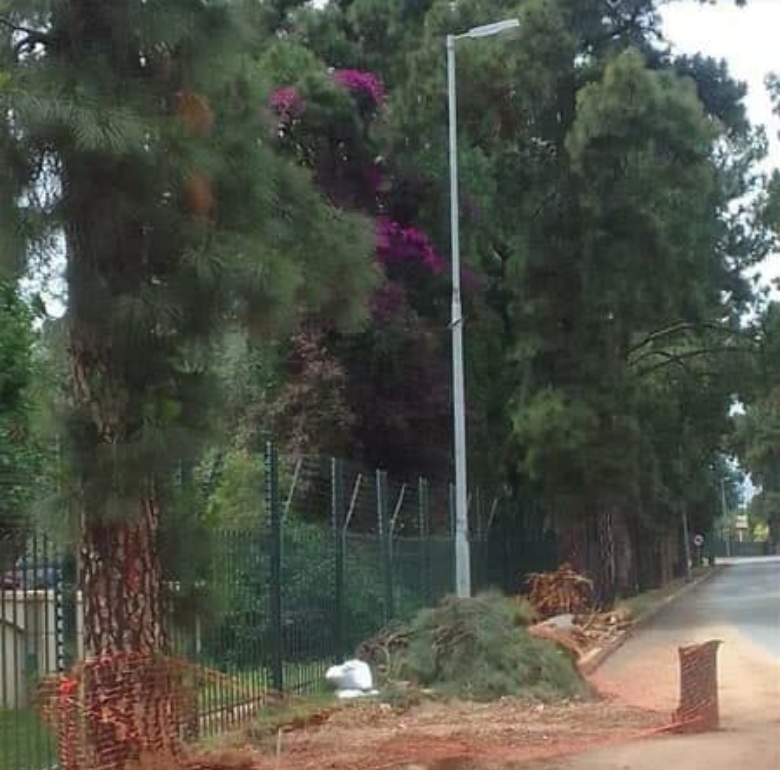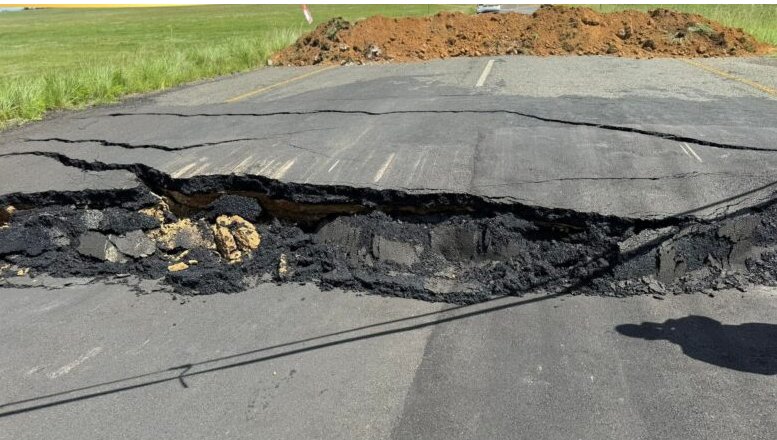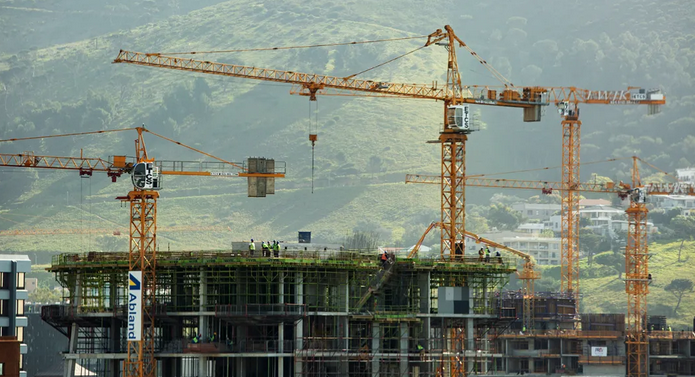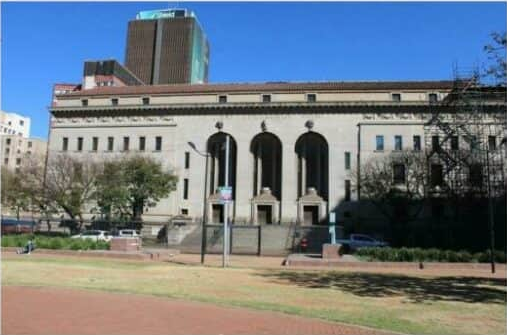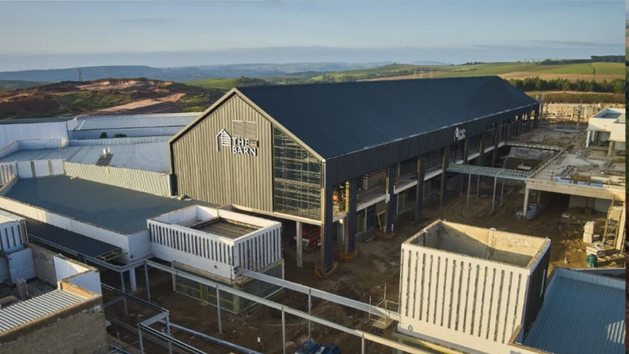City builds Africa’s first precast-concrete water tower
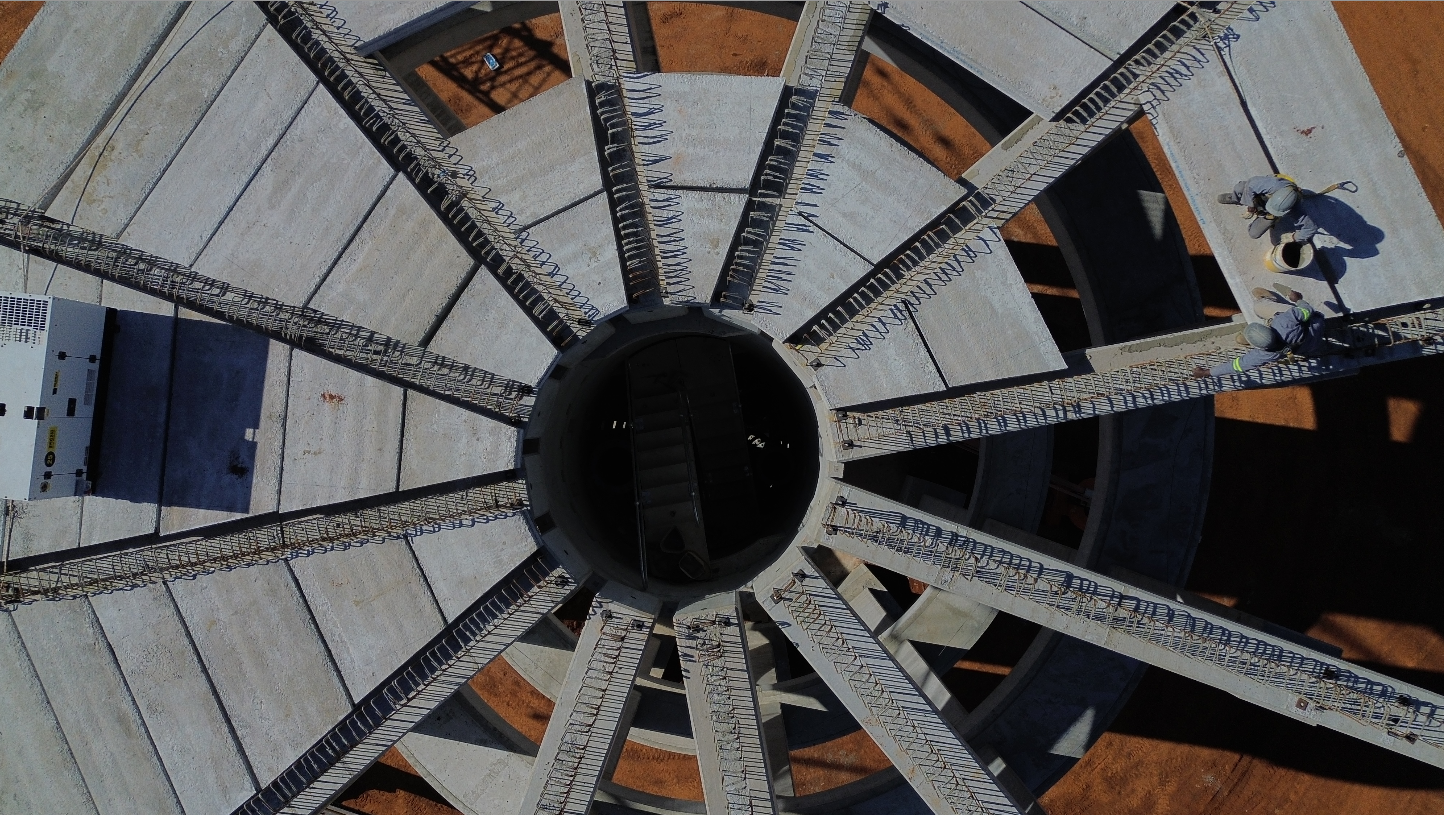
08-08-2024
Read : 97 times
The Content Engine
Source
The City of Ekurhuleni’s Water & Sanitation Department is at the cutting-edge of precast-concrete technology. This water-services provider has already successfully completed the construction of four prefabricated reservoirs. With another precast concrete water-retaining structure nearing completion, it was just a matter of time before the Water & Sanitation Department would take its concept even further.
A new water tower is being constructed alongside one of these precast-concrete reservoirs. It too, when completed later this year, will have been almost entirely prefabricated in a state-of-the-art factory and skilfully integrated on site. The only in-situ components include the tank floor slab and the foundation.
When finalised later this year, this will be the first precast-concrete water tower in Africa. It will have a final height of 36m and a capacity of 2,5ML.
The municipality opted for a precast-concrete water tower because it was faster and more cost-effective to build. This while also providing a final structure of an exceptionally high quality which, in turn, will provide operating cost savings through reduced maintenance requirements.
The efficacy of prefabrication had proven itself time and again on each of the projects the Water & Sanitation Department completed. Meanwhile, its professional team had also become more proficient in executing the works, refining and honing the sophisticated method from one project to the next.
The water services provider is again being supported by Tangos Consulting Engineers, the design engineer and project manager, and Infinite Consulting Engineers, a structural engineer with an extensive pedigree in the design and supervision of precast-concrete structures. This is in addition to RSMM Construction, the principal contractor, and Corestruc, a precast-concrete turnkey contractor. Partnering Corestruc with its extensive precast-concrete know-how, which includes manufacture, transport and rigging, RSMM Construction has earned a reputation for the exceptionally high quality of its water-retaining structures. This while building them in fraction of the time that it would have taken using conventional cast-in-place methods.
The construction of the precast-concrete water tower will be completed in only 14 months compared to between the two and three years that it would take using traditional methods. Considering that this is the first precast-concrete water tower to be built by the team, it is taking slightly longer to construct. The other water-retaining structures will be completed in only nine months, bearing in mind that the tower constructed above the footing took only six months to build.
It will also have a design life of 100 years if maintained appropriately, considering the high-performance concrete used to manufacture each individual component.
Corestruc’s quality control technicians precisely calculate the moisture content of aggregates and factor in water from admixtures to make the necessary modifications to maintain the optimum water-to-cement ratio. The company is also judicious in its selection of aggregates to ensure that they are as impermeable as possible. Furthermore, admixtures are used to modify fresh or hardened concrete. All of these produce an almost impermeable concrete element that can withstand damaging chloride and sulphate ions, as well as aggressive chemicals.
The water tower design is the outcome of years of research and development by Corestruc and Infinite Consulting Engineers, followed by a sizeable investment into the new formwork required to manufacture the various concrete elements that make up the structure. These are already being used to fabricate the precast-concrete elements for another precast-concrete water tower that is also being built in the municipal jurisdiction. Further structures are also being planned by other municipalities as they explore more efficient and cost-effective ways of augmenting water supply, a critical challenge in the country.
They include the forms used to manufacture the 12 columns and spiral beam elements for each of the three sections or “rotations” that comprise the outer portion of the tower. These 30 interconnected semi-circular prefabricated elements wrap around the structure providing the necessary support, while also offering a striking aesthetic effect. The two columns are fixed via the protruding dowels that pass through the underside and topside of the spiral beam which is then filled with in-situ concrete. This process was repeated until the columns reached their final height.
Then there are the 15 prefabricated elements that make up the 3,6m-diameter shaft, which is constructed at the same time as the outer portion of the structure. Equipped with precast-concrete stairwells with balustrades, it leads to the underside of the prefabricated tank. Thereafter, the shaft connects with stacked precast concrete pipes equipped with a cat ladder. Cast into the reservoir floor slab, this top portion of the shaft will traverse through the water-retaining structure to a manhole on the roof.
The superstructure consists of 12 tapered beams connected to the columns of the last rotation. Resting on bearing pads, they will carry and distribute the load of the precast concrete tank and its contents.
Installed in the triangular-shaped junctions between the tapered beams, cut-to-size and shape hollow-core slabs serve as the shutter for the in-situ foundation for the water-retaining structure. Coping panels have been installed along the perimeter providing an aesthetically pleasing finish.
To ensure the very high levels of accuracy required for this precast-concrete structure, Corestruc has also invested in a robotic total station. It is also fast and highly efficient, which is precast concrete’s ultimate value proposition. This technology is making the company even more efficient at what it does so well.
Meyer van Rooyen, a seasoned Corestruc Project Manager, who has supervised all precast-concrete work thus far, says that there is very little scope for error on this project. “We have achieved tight 15mm tolerances throughout the construction of the three rotations of the substructure, starting with the placement of the first-rotation columns on the in-situ foundation. Among other factors, this is also facilitated by our precise manufacturing processes. Each element undergoes extensive quality assurance before it is dispatched and again once it has arrived on site. Once the elements have been safely transported to site and as the last component in Corestruc’s precast-concrete value chain, the responsibility rests with my team of riggers to maintain the highest levels of productivity, efficiency and accuracy,” Van Rooyen says.
His team is supported by a state-of-the-art 150 t mobile crane, which has the capacity to lift the heavy precast-concrete elements and reach to efficiently place them. The 12 tapered beams, for example, each weigh a staggering 18,5 t and the columns for the second and third rotations slightly less.
While the tank is significantly smaller than the reservoirs that Van Rooyen and his team have already built, constructing it many metres above ground poses unique challenges.
Safety of employees is on top of mind for RSMM Construction and Corestruc. Therefore, the companies have contracted the services of a specialist work at height safety consultant to assist with occupational health and safety protocol. It will also provide specialist training to the team.
Four sub-contractors who have been sourced from communities located within the construction footprint will work alongside Corestruc’s team to construct the floor slab. A total of 104m3 of concrete will be placed to construct the 350mm-thick floor slab. One of the challenges is the heavy reinforcement in the beam junctions. Therefore, the placement of concrete will have to be carefully managed to ensure that the correct compaction is achieved. This while also ensuring that the top portion of the cast-in-place shaft is water-tight.
An articulated boom lift has already been placed on top of the superstructure to assist with the installation, as well as the grouting of the 34 tank wall panels. This is in addition to the two buttress panels for post-tensioning, which will be undertaken in the same way as all of Corestruc’s other reservoirs. All of the wall panels will be propped during their installation, considering the wind speeds at this height. Conventionally, only the first wall panel is propped to free up space.
Meanwhile, the roof structure consists of four columns and beams, as well as 150 hollow-core slabs. The centre portion or “core” will be constructed first, and the outer section completed as part of the among the final aspects of the programme.
While the structure, itself, demonstrates excellence in precast-concrete design and implementation, Van Rooyen says that RSMM Construction and Corestruc have also had an opportunity to show off their extensive expertise in cast-in place concrete methods.
“Supporting this water tower is a 1m-thick and 25m diameter foundation consisting of 500m2 of 30MPa cast-in-place reinforced concrete. It is underpinned by 200m2 of mass concrete blinding. This took 10 hours to place, starting at 5h00 and using two concrete pumps, while also isolating an entire ready-mix concrete plant just for this purpose,” he says.
Van Rooyen has all the reason to be proud, considering how well the project is progressing. He will soon be able to boast that he has again played his part in yet another project that has demonstrated the efficacy of precast concrete!
For more information contact:
David Poggiolini
Debbie Poggiolini
Recent News
Here are recent news articles from the Building and Construction Industry.
Have you signed up for your free copy yet?
